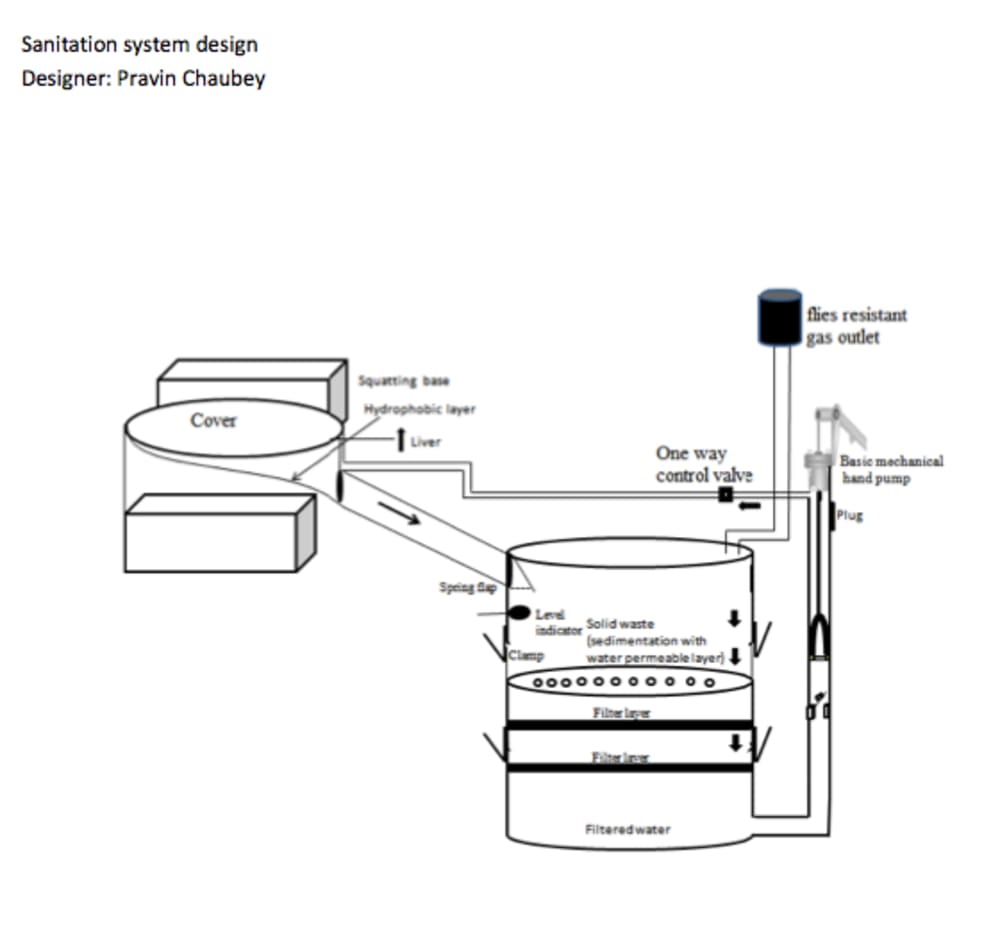The proposed design is a compact, minimal water (semi dry), self cleaning, cheap, robust and biodegradable toilet.
Sanitation in developing countries is affected by limited infrastructure, lack of technology and behavioral issues. Conventional offsite systems require reliable water supply and wastewater treatment both being scare in developing countries. On site systems need to avoid ground water contamination, keep away flies/odor and overcome difficulties in construction in hilly areas. Several organizations currently provide sanitation solutions for community needs, but they are mostly offsite systems. This design is a hybrid system that provides waste management at the source and reuses water. The system can be used as an efficient conventional onsite system too. It provides self cleaning, reducing water consumption. Does not need electricity & separates solid and liquid wastes. Uses environment friendly organic liquids to increase pH and reduce disease causing pathogens. It also helps in reducing odor. Provides organic manure as byproduct. It can be made with relatively cheap and assessable technology/materials.
The proposed design is a semi closed system with a small quantity of water moving waste as well as eliminating pathogens . For risk minimization the earlier the treatment the better. Pathogens are known to die off at higher pH. So water getting circulated within the system is made alkaline by addition of readily available powdered lime or soda ash (more accessible/cheaper then chlorine). It also reduces odor. A pH of 9 or more for 24 hour period can make the solution un-habitable for viruses and bacteria. It is estimated that addition of lime once every two week will sustain the required pH in the system. About two teaspoons of lime per gallon of water can raise the pH to required levels, so 250 grams of lime mixed with 20 gallons of water would be taken as initial alkaline solution. It would not harm the system if a rough measurement is made (more practical). Gravitational sedimentation (being simple and cost effective) forms the first stage of solid waste separation (to reduce volume and weight). During second stage water permeates to lower chamber, leaving solid waste in upper chamber. Two layers of screen filter further separate the waste from the solution. The filtered water gets collected in the lowest chamber(see figure). Two level indicators indicate disposal time for solid and liquid waste. The user first hand pumps filtered water into the bowl before use. The same pump is also used for draining excess water out (through drain plug). Two spring loaded flaps seal odor from reaching the bowl. As the top (solid waste) chamber gets full, it is replaced by an empty one. The removed chamber is sun dried (in sealed condition).
The dried and treated solid waste contains bulk of organic material and can be sold as a very good soil conditioner. The bowl and separation chambers are made up of cheaply available molded plastic coated on the inside with Bee wax (high melting point for hot climate) to make them hydrophobic and self cleaning.
Like this entry?
-
About the Entrant
- Name:Pravin Chaubey
- Type of entry:individual
- Software used for this entry:Solid works, Matlab
- Patent status:pending

